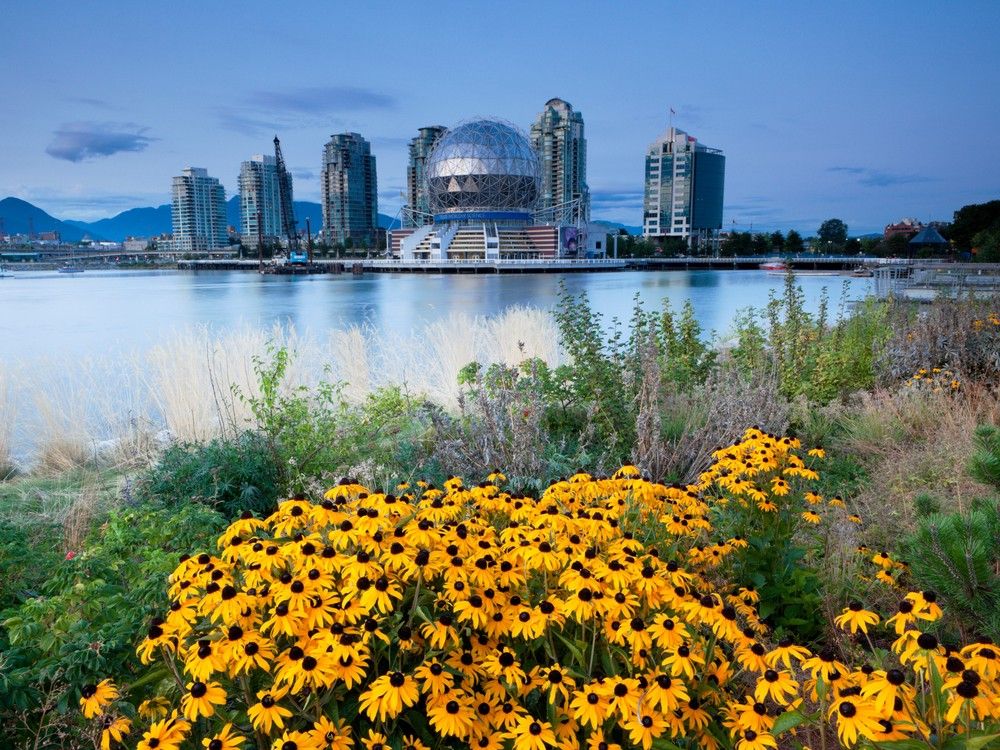
Finding the magic in Vancouver is sometimes about discovering what is hidden in plain sight.
The city can be a playground, a gallery or a feast for the senses. There may be no better way to uncover the beauty that is around us and see the city in a new way than taking a walking tour with camera or cellphone in hand.
To find the best views the city of Vancouver has to offer, we turned to the people who look most closely: Some of the photographers that have made Vancouver’s skyline famous.
Chris Collacott
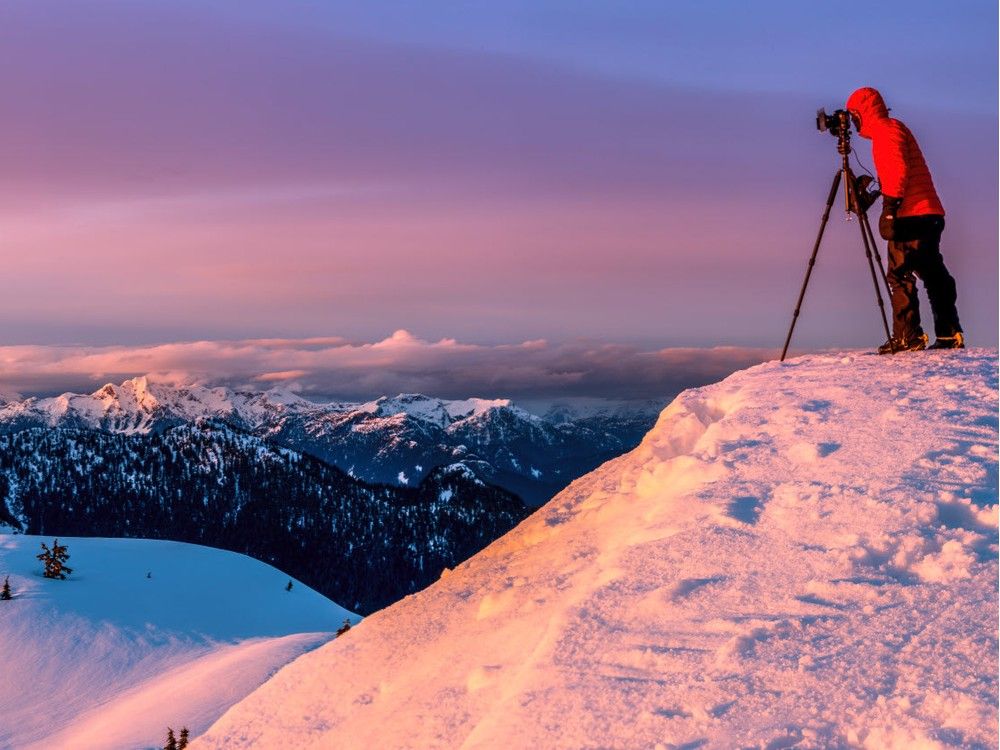
Chris Collacott, an internationally acclaimed photographer whose seven metre long Vancouver skyline mural was featured at Olympic Village during the 2010 Olympics, has revelled in the cityscape since moving here in 1994.
“I was 19 years old, from Ottawa. I wanted to go somewhere that wasn’t flat. I wanted the mountains, and the outdoors, so I hopped on a motorcycle and went west.”
While getting a degree in IT at BCIT, he explored the region, taking photos with a point-and-shoot in hand.
“I was at the top of Panorama Ridge in Garibaldi Provincial Park, and in order to get the whole view I had to take three photos and Scotch tape them together,” said Collacott.
“My passion has always been panoramas,” said Collacot, 50, who has sold over 20,000 prints of his famous Vancouver skyline photo . “This was my niche.”
Collacott’s IT background and advances in camera technology have helped him master the technical challenges of getting the perfect panorama and skyline views.
He no longer has to use Scotch tape but can take 50 to 100 shots in quick succession and merge them together to create detailed panoramas.
His work can be seen at YVR’s arrivals terminal, B.C. Place Stadium, the SFU campus, and most recently in Brunei, where he was commissioned to do a major installation.
What he loves about Vancouver’s skyline
“Vancouver is unique: you have the ocean, the city, and the mountains in a row. Its really well balanced, and people connect with it. I’ve had people buy my print because their boat is in it.”
Favourite skyline views
His favourite skyline view may be the most difficult one to get. Accessible only through a private residence in a highrise on Broadway near Cambie, the view encompasses all of False Creek, the Cambie, Burrard and Granville street bridges, Yaletown, the tall buildings downtown, and behind that Cypress and Grouse mountains.
“You even get the windmill on top of Grouse,” said Collacott.
Another favourite is to shoot from the Nine O’Clock Gun on the Stanley Park seawall, overlooking Coal Harbour.
“The south-facing skyline flows nicely, it has a beautiful harbour, the rocks at low tide, Coal Harbour, the boats, the old marina, the city buildings and Canada Place.”
His favourite winter view is a hike-in shot taken from the top of Hollyburn Mountain, near the Cypress ski resort, and it’s even better in winter when snow-covered evergreens frame the shot. (Not for inexperienced hikers, he cautions.)
“You see the entire Lower Mainland from downtown to Burnaby, White Rock and Mount Rainier.”
Best time to shoot
“It’s the moment when the brightness of the sky is the same brightness as the city lights and the lights in the buildings start turning on and both have the same balance. About 30 minutes after sunset, on a clear day the orange glow on the horizon reflects off all the buildings, and you get that beautiful reflection off the glass. There is about a 15-minute window when the light is perfect. You have 15 minutes to take 100 shots.”
Tips and tricks
“Think about the composition. Look at the balance of everything in the frame of your phone: if you are doing a skyline, use the horizon in the middle, try to get a reflection off the water to mirror the skyline, or use nature to frame it. Trees on either side gets your eyes to look in the middle at your subject.”

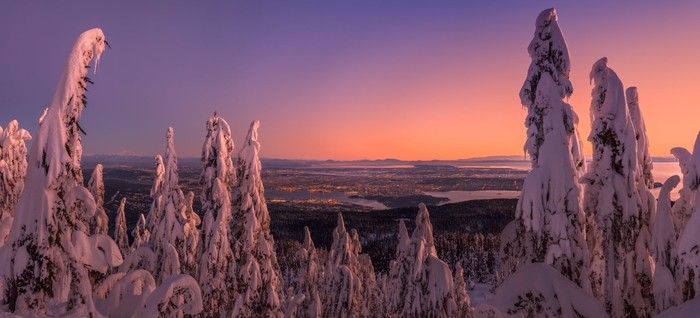

Chris Collacott’s work can be seen on his website, Avision.ca, and his courses taught with fellow photographer Tim Shields are available at ThePhotographyAcademy.com.
Richard Wong
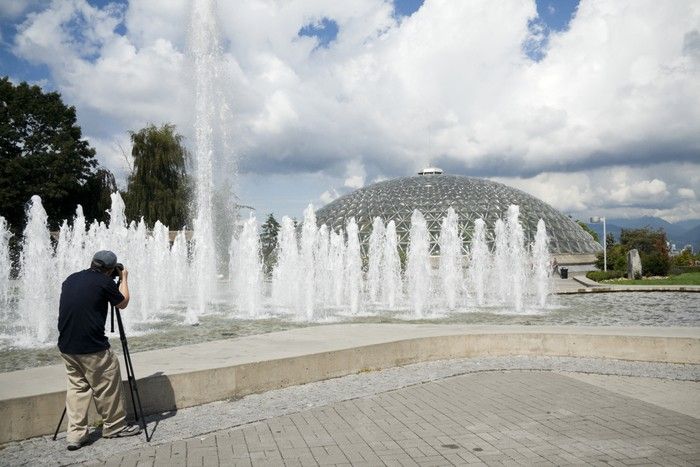
Richard Wong , who was born and raised in Los Angeles, first came to Canada at the age of six. The family spent a week in the Canadian Rockies, and a week exploring Vancouver and Victoria. He has returned again and again to capture the city in photos.
“I fell in love with Vancouver’s beauty and lush, rainy environment,” said Wong. “Vancouver has everything: a very metropolitan downtown, it’s walkable, surrounded by water, it has Stanley Park.”
Wong started shooting photos for fun in the late 1990s, when he was a teenager. “I wanted to shoot photos of all the things I had seen in life. I’ve gone back and shot every place I’ve ever been.”
Vancouver, where he has extended family, became a favourite return destination for photography.
Among his favourite skyline views is Vancouver during the blue hour, just after sunset. “The orange glow has disappeared and the sky, the roofs of Rogers Arena and B.C. Place, the yachts and waters of False Creek are all painted in the blue hues of twilight.”
Wong primarily sells landscape and nature photography prints, but counts the urban landscape as part of that. For Wong, shooting a skyline is part meditation, part stress relief. It doesn’t feel like work.
“I love to go out on my own and take pictures. It’s a way to focus, and get away from worries.”
Wong lives in the Bay area with his wife and two children. “It’s an expensive place to live and that is stressful. Photography is very relaxing to me. The quietness and focus is really satisfying.”
What he loves about Vancouver’s skyline
“You get a good mix of outdoor, nature and also pure urban stuff. In a relatively compact area you can have your choice of any landscape.”
Favourite skyline views
“I love anything with the water. From the southeast False Creek seawall by Olympic Village, you can shoot across False Creek to capture a good view of the sports buildings at night, and it’s not photographed as often as other skylines.
He also loves shooting photos from the entrance to Stanley Park in Coal Harbour, especially at night, looking east. “You can see most of the buildings downtown from there, and you have good reflection there.”
“Another one is Granville Island, where you can be up really close to the buildings (across the water). Go by the aqua bus area near the bridge, looking northeast at a 2 to 3 o’clock angle.”
Best time to shoot
“Wake up before sunrise. Shoot 30 minutes before sunrise. Or after sunset when you get blue in the sky or purple and still have ambient lights in the buildings, which gives you a combination of lighting that is really pretty. People shoot a sunset and go home, but the most beautiful light may be afterward.”
Tips and tricks
“Consider what angle the light is coming from. If you are shooting from Stanley Park, the sun is likely rising from behind the buildings and it might be difficult because you will be shooting straight into the sun. Try sunset or dusk from that location.
“Try and look for something reflective. Look for shallow water. When the water is shallow you are more likely to get better reflection and better exposure.”
“A great skyline shot has a balanced composition from foreground, to the midground and background. Minimize distracting elements, like a stray person walking through the frame, or airplane contrails above the buildings.”

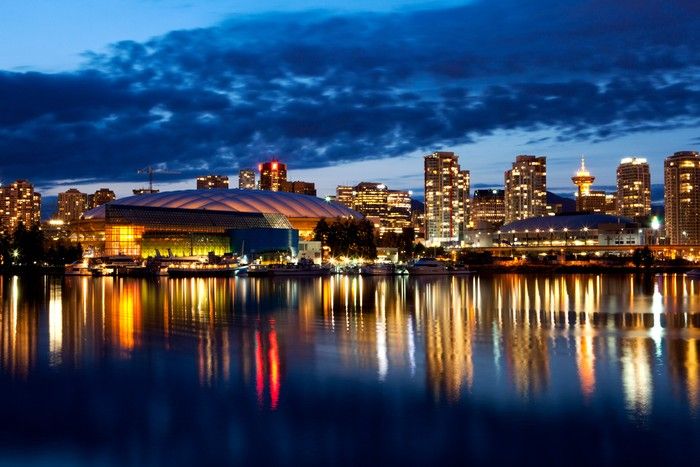
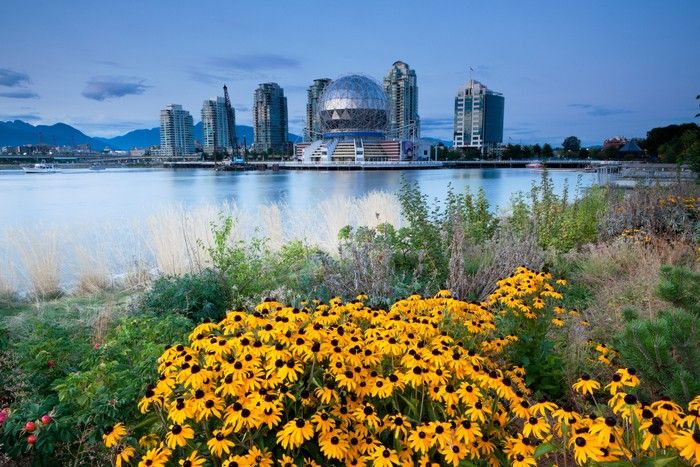
Wong regularly shows in galleries across North America, and sells his prints on rwongphoto.com.
Ian Kobylanski

Ian Kobylanski is a Richmond-born photographer who divides his time between Vancouver and London, England. Kobylanski caught the photo bug as a student at McMath Secondary, where he lucked into the photo program. He credits his teacher, Anil Sharma, for showing him that a career in photography could be more than just a dream.
“I wouldn’t be a photographer if it wasn’t for that course,” said Kobylanski.
Kobylanski, 29, now specializes in lifestyle, editorial fashion and street photography, and recently picked up a side gig shooting photos of men and women for elite dating sites. The images appear to be candids but are “well choreographed.”
“It just caught on and people are coming to me from all over Europe for them,” he said.
What he loves about Vancouver’s skyline
“A skyline photo doesn’t have to be this perfect image that has Science World and B.C. Place and all these recognizable landmarks. I find getting angles that no one else gets is really exciting.”
“I see so many photographers going for the very same photo. It’s a really good way to learn and to understand the mechanics — how do I get this photo? how do I achieve that? — but for me it’s a personality thing. I like to be different. I’ve been told I use the term ‘skyline’ incorrectly.”
For Kobylanski, a skyline could be urban with a car in front, or a blurred person walking through, always from interesting angles, whereas most people think of a skyline as being something seen “head on.”
He also likes to take photos from a lower angle and to play with height.
Favourite skyline views
“I love the glass bridge between Waterfront Station and the SeaBus. You see a lot of the city, and can get really cool rain stuff but stay dry,” he said.
“Everyone’s apartment has unique views of different places. Our condo in Mt. Pleasant near Emily Carr College on Broadway has a little bit of elevation. Off the balcony I’ve got the North Shore mountains, B.C. Place, Rogers Arena. The entire block is getting completely developed and we currently look at a gigantic pit. I’m recording it because we are not going to have this view of the skyline for much longer.”
Hinge Park in Olympic Village near the J.J. Bean is another favourite view. “When you are facing north and the sun is south behind you, hitting all the buildings, you can see B.C. Place, all the glass buildings leading up to Yaletown.”
Best time to shoot
“Sunset and evening are great, but the city is full of people distractions. I love early morning for the light and the empty streets. I also prefer getting people in the morning: people are dressed up, looking their best, on the way to work on autopilot. You can get interesting emotion and faces.”
Tips and tricks
“It’s easy to try to be a perfectionist, but if you are going to share something with the world, it’s the story that makes it meaningful. Keep it personal. Try shooting the same spot at different times of day, or take a photo from the same spot once a week,” said Kobylanski.
Kobylanski also recommends that if you happen to see an interesting location, take a picture on your phone because it saves a geographical location. You can go back to it later with a camera.
And there’s no need for expensive equipment, he said.
“If you are just starting out, there are times when your phone is going to be better than a camera. All new phone cameras automatically use HDR and right out of the gate you get a beautiful photo without using software to edit.”
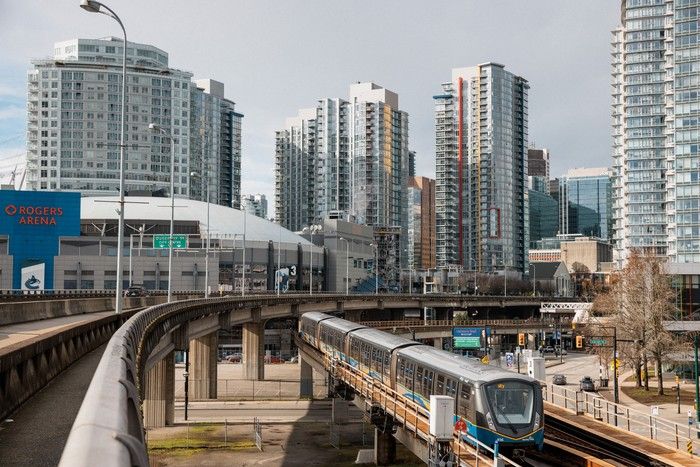
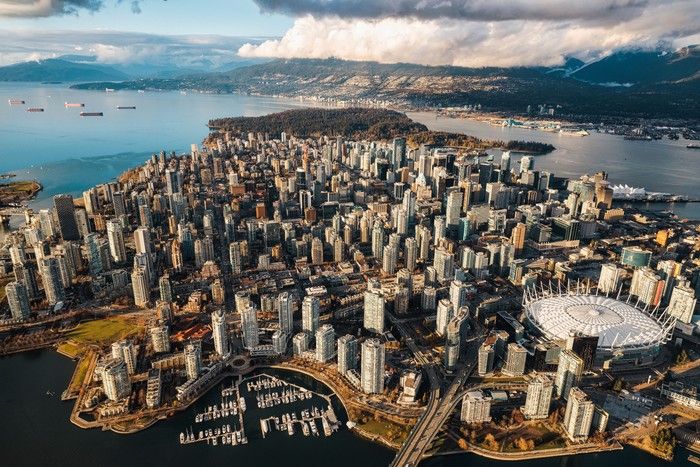
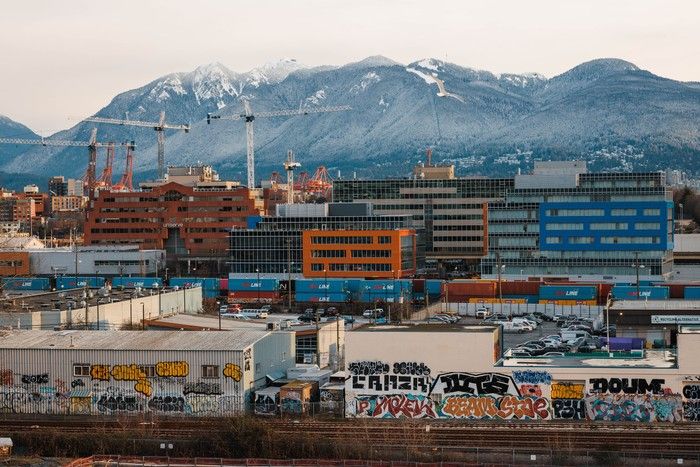
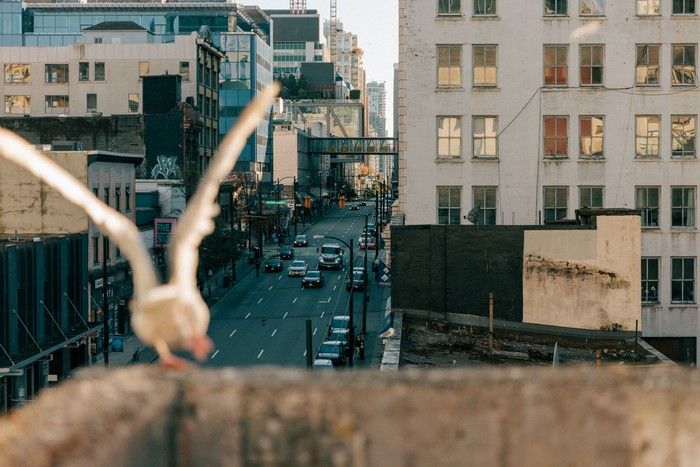
Kobylanski’s work can be seen at his website, koby.photography
Jenn Chan
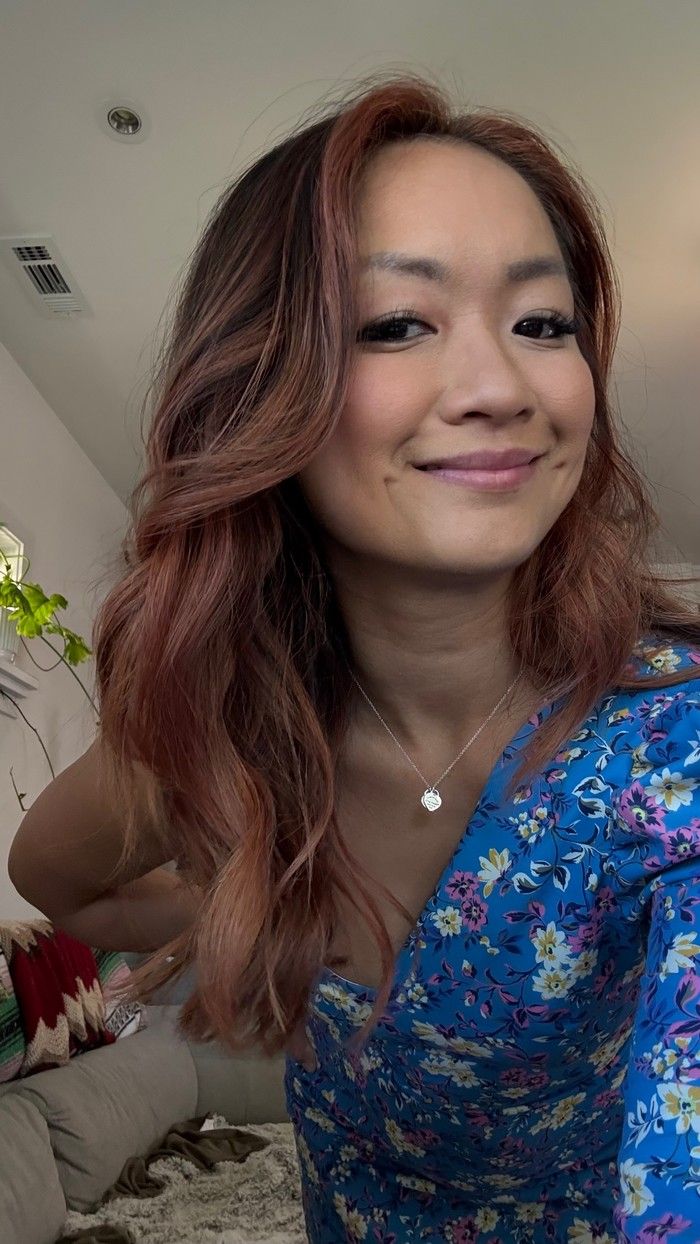
Jenn Chan , a production director at CTV news and avid self-taught amateur photographer, grew up in Vancouver after moving here at age 5.
Chan said she was drawn to photography because of her love of beauty and symmetry. Her first good camera was a DSLR Canon 50D that she had found on sale but ended up putting aside. A year later, she picked it up and Googled some tutorials. The same day she studied a new skill, she would go out to shoot photos and test out the settings.
“I got addicted to learning more and more and found out I really loved to shoot the skyline and night photography. My absolute favourites are shooting the skyline at blue hour (just after the sun sets), when the buildings would light up and the sky would still be a little light.”
Fireworks are another favourite: “It’s all about the set up and patience to get it right.”
Chan said photography has led her to revisit a lot of favourite spots in the city, and explore them through the camera lens.
What she loves about Vancouver’s skyline
“I find that a great skyline shot will give a cool perspective of the city or an overview of the city. I love the tall new buildings mixed with older lower buildings with a beautiful sky behind it. A moody sky gives the photo an extra oomph.”
Favourite skyline views
“A great spot to capture the downtown Vancouver skyline is on the North Shore on Lonsdale Quay.”
She also loves the Cypress Lookout, Top of Vancouver (the revolving restaurant atop Harbour Centre), and the view of Gastown/Canada Place from the Main Street loop by Waterfront Road.
Another favourite viewpoint is of the Lions Gate Bridge from the Stanley Park causeway overpass near Prospect Point.
Tips and tricks
“I will always try to position the subject in the light if I can, depending on time of day. I find having a tripod and, if you can, a remote for the camera / phone, helps to keep the image stabilized.”
Chan said she loves blue hour after sunset and golden hour just before for good light. “Patience is key if you want to take evening / night photos. And just have fun and play around!”
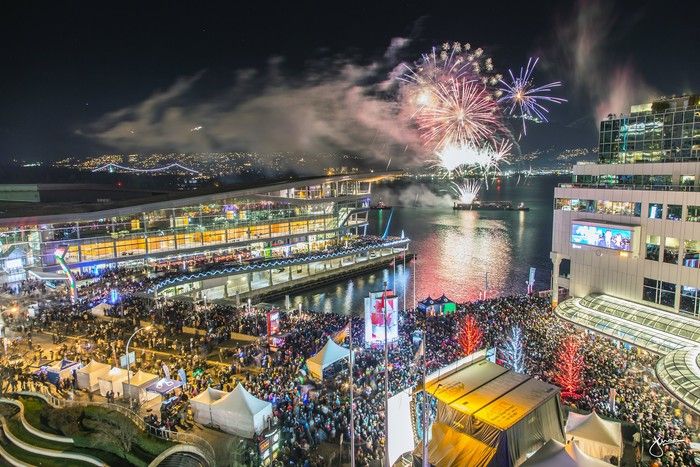
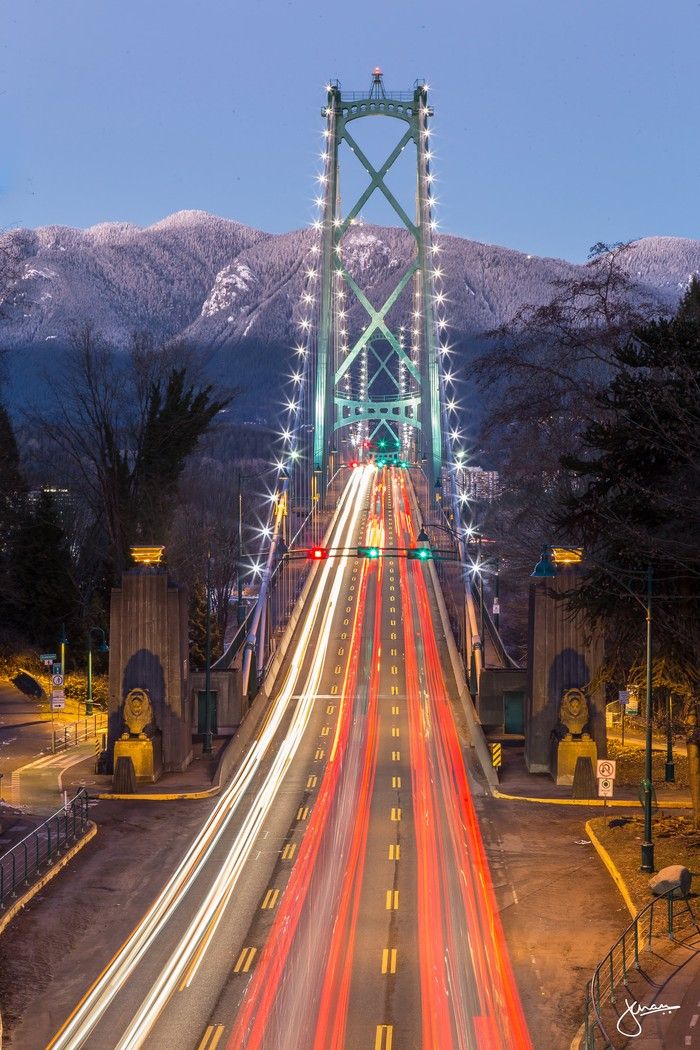
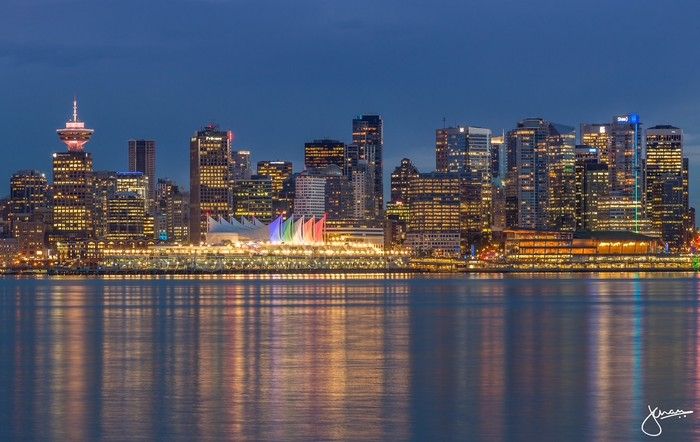
We love where we live, and throughout the summer, we are running a series of stories that highlight what makes our community unique and special within Canada. Follow along with How Canada Wins right here.